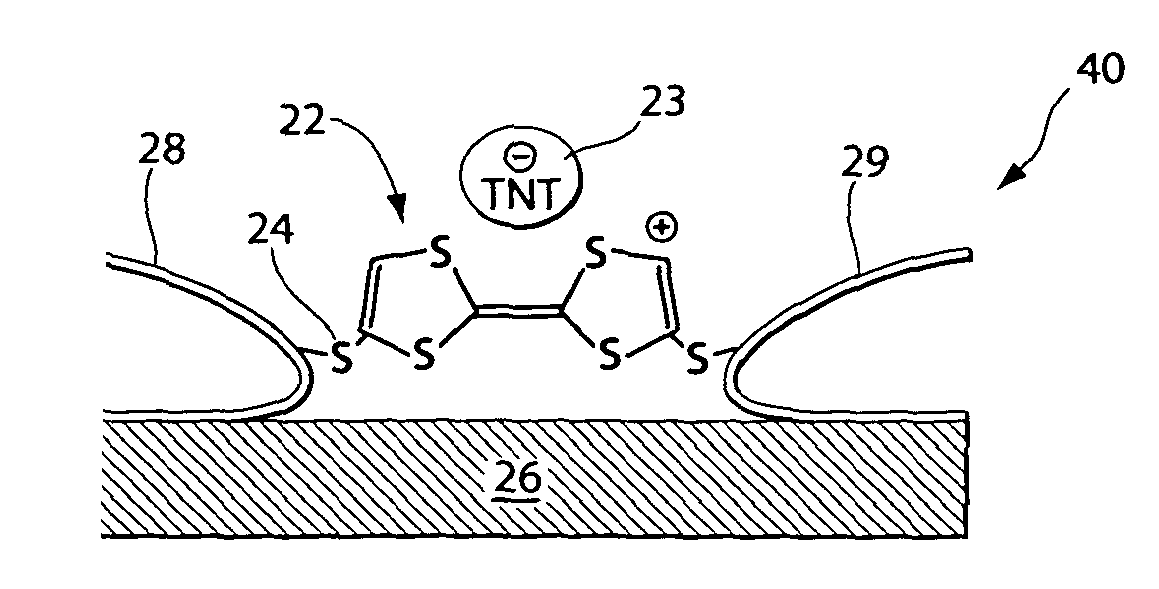Molecular sensors for explosives
a technology of explosives and sensors, applied in the field of methods for detecting explosives, can solve the problems of inconvenient use in the field of current mass spectrometric systems, and achieve the effect of convenient operation and rapid communication
- Summary
- Abstract
- Description
- Claims
- Application Information
AI Technical Summary
Benefits of technology
Problems solved by technology
Method used
Image
Examples
example
[0078]TTF derivatives containing thiol (SH) pendant groups are prepared from thiolates by deprotection, following the methods described by Becher and co-workers (8). The thiol-protecting groups are 2-cyanoethane. The deprotection is done in situ, namely in place, by the addition of cesium hydroxide monohydrate, dissolved in degassed absolute ethanol. The TTF derivatives are employed as molecular wires and thus contain thiol groups on both rings, to permit bridging between two gold wires that form a gap of from about 1 nanometer (nm) to about 2 nm.
[0079]Formation of gold leads is accomplished by e-beam lithography, according to the method described by Guillorn and co-workers (2), or by break-junction techniques as described by Park and co-workers (4).
[0080]The rest of the operations are best performed in an environmental chamber in the absence of oxygen.
[0081]The substrate, which includes a surface covered with gold electrodes with the proper gaps, is inserted into a solution contain...
PUM
| Property | Measurement | Unit |
|---|---|---|
| distance | aaaaa | aaaaa |
| inter-electrode distance | aaaaa | aaaaa |
| diameter | aaaaa | aaaaa |
Abstract
Description
Claims
Application Information
 Login to View More
Login to View More - R&D
- Intellectual Property
- Life Sciences
- Materials
- Tech Scout
- Unparalleled Data Quality
- Higher Quality Content
- 60% Fewer Hallucinations
Browse by: Latest US Patents, China's latest patents, Technical Efficacy Thesaurus, Application Domain, Technology Topic, Popular Technical Reports.
© 2025 PatSnap. All rights reserved.Legal|Privacy policy|Modern Slavery Act Transparency Statement|Sitemap|About US| Contact US: help@patsnap.com



